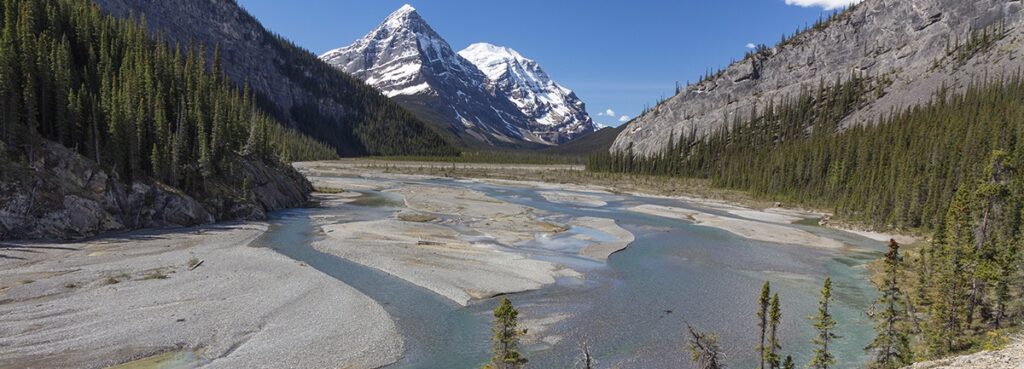A New World

Looking West Toward Athabasca Pass
By 1810, Thompson’s original route across the Rockies via Howse Pass was blocked by the Peigan (Piikani), who opposed traders supplying their adversaries south and west of the mountains. Seeking an alternative, Thompson learned from his Indigenous guides of another way across the mountains further north. Having been turned around, Thompson made his way down the Saskatchewan River and eventually proceeded north overland to the mouth of Obed Creek on the Athabasca River. He ascended the Athabasca River to present day Jasper, Alberta where he prepared to cross the mountains. He left the Jasper area in the first week of January 1811 and reached the pass on 9 January 1811.
That evening he the wrote that “when night came, we had only wood to make a bottom, and on this to lay wherewith to make a small fire, which soon burnt out and in this exposed situation we passed the rest of a long night without fire, and part of my men had strong feelings of personal insecurity… [and that his] men were not at their ease, yet when night came they admired the brilliancy of the Stars, and as one of them said, he thought he could almost touch them with his hand” He closed by stating that “…many reflections came on my mind; a new world was in a manner before me, and my object was to be at the Pacific Ocean before the month of August, how were we to find Provisions, and how many Men would remain with me, for they were dispirited, amidst various thoughts, I fell asleep on my bed of Snow.”
Thompson recorded the crossing of the “Height of Land” at Athabasca Pass on 10 January 1811, marking his first passage into the Columbia River basin by this northern route. Athabasca Pass opened a safe, reliable fur trade highway between the eastern posts of the North West Company and the Columbia district and would be operated for 50 years by both the North West Company and the Hudson’s Bay Company.
